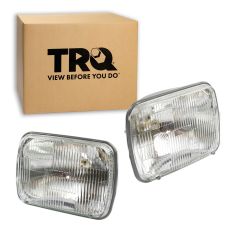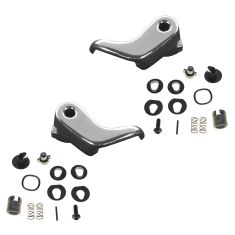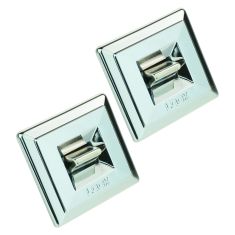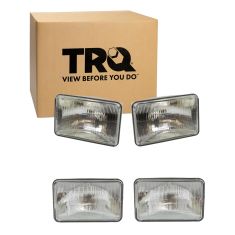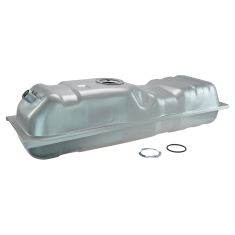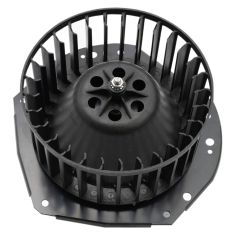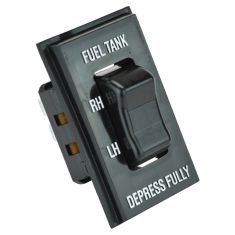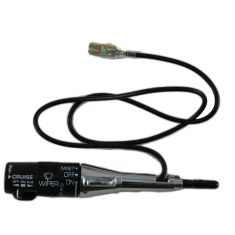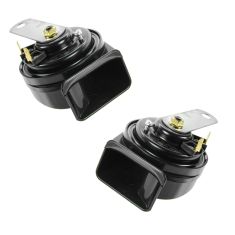Chevrolet K10
-
Notify When Available$51.95Save 16%List $61.95 Save $10.00Brand: TRQ - HLA93557$51.95Save 16%List $61.95 Save $10.00
-
Notify When Available
Replaces Chevrolet GMC Driver & Passenger Side Vent Window Crank Handle 2 Piece Set TRQ DHA35357
Brand: TRQ- DHA35357$37.95Save 28%List $52.95 Save $15.00Brand: TRQ - DHA35357$37.95Save 28%List $52.95 Save $15.00 -
Notify When Available$24.95Save 34%List $37.95 Save $13.00Brand: TRQ - SWA40811$24.95Save 34%List $37.95 Save $13.00
-
Notify When Available$84.95Save 11%List $95.95 Save $11.00
Replaces 4 Piece Headlight Set TRQ LKA93536
Brand: TRQ - LKA93536$84.95Save 11%List $95.95 Save $11.00 -
Notify When Available$124.95Save 25%List $165.95 Save $41.00
Replaces Chevrolet GMC Fuel Tank TRQ FTA07639
Brand: TRQ - FTA07639$124.95Save 25%List $165.95 Save $41.00 -
Notify When Available$84.95Save 12%List $96.95 Save $12.00Brand: TRQ - HMA80108$84.95Save 12%List $96.95 Save $12.00
-
Notify When Available$24.95Save 17%List $29.95 Save $5.00Brand: TRQ - SWA41713$24.95Save 17%List $29.95 Save $5.00
-
Notify When Available$29.95Save 17%List $35.95 Save $6.00Brand: TRQ - SWA41768$29.95Save 17%List $35.95 Save $6.00
-
Notify When Available$64.95Save 18%List $78.95 Save $14.00Brand: TRQ - ELA17620$64.95Save 18%List $78.95 Save $14.00
-
Notify When Available$46.95Save 16%List $55.95 Save $9.00Brand: TRQ - HLA93558$46.95Save 16%List $55.95 Save $9.00
The K10's Beginnings
Chevy's K10 was long the standard model of Chevrolet's pickup line. The C/K pickup line, manufactured by GM, dates back to 1960. It was one of the best-selling truck lines in the U.S, with the "C" representing two-wheel drive while the "K" representing four-wheel drive.
The K10, which stood for half-ton truck, came in Stepside or Fleetside bed styles. A new drop-center frame was installed; a coil spring rear suspension; an 8 ft. cargo box; and three engine choices: a 235ci I6, a 283ci V8, or a 348ci V8. In 1964, K Series trucks received the 230ci and 292ci I6 engines, which had been made available for the C Series the prior year. That same year the windshield changed from a flat to a curved form to provide better visibility and more room inside the cabin.
The K10 Built Throughout the Years
The second generation began in 1967 and expanded the idea of what a truck could be. Instead of making a pickup for work, the truck was designed to appeal to families too-particularly the ones tugging campers on vacation. The K10's height was lowered by five inches, the wheel base increased to 127 inches, rear coil spring suspensions became standard, and a CST package was offered for the camper pickup. The standard engines available on the K10 were a 250ci I6 or a 283ci V8 accompanied with a three-speed manual transmission. Also introduced for this generation was the Chevy Longhorn, which was an extended version of the K10 with an 8.5 ft. cargo box and wheel base of 133 inches.
The ‘70s supported a boxier look and feel to the truck. The flatter hood, egg-crate grille with square headlights, sharply carved body, and sleeker windshield all gave the K10 a new image. It had an optional crew-cab that came with an 8 ft. Fleetside box and was capable of fitting six-passengers. It also came with a 3,800 lb. axle, and three new trim levels: the Scottsdale, Cheyenne, and Silverado. In the late ‘70s, Chevy was the first company to offer a package with power windows and locks for trucks. However, the design generally remained unaltered other than a few comfortable interior upgrades and changes to the grille. Due to government regulations and the energy crisis, most of the improvements were made on the engine. Options included a 4.8L I6 with 120 horsepower or a 5.7L V8 with 160 or 175 horsepower. Diesel options included a 6.2L V8 capable of 135 or 148 horsepower. An aluminum transfer case helped lower the weight, and the all-wheel drive was switched to part-time four-wheel drive with an all-new transfer case that allowed the shift from two-wheel drive to four-wheel drive at speeds under 25 mph. Automatic front locking hubs were included with the new system.
During this time, for one year in 1987, the "C/K" nomenclature was switched to "R/V," " while Chevy worked on a new version of the C/K platform. The older style continued to be built as R/V models until 1991. The new trucks were built upon the GMT400 platform with longer bodies. They stood for the same thing: "R" for 2WD and "V" for 4WD. Headlights were changed to a rectangular shape, and the interior was enlarged. In 1988, Chevrolet returned to the "C/K" nomenclature and changed the name from K10 to K1500.
Even though the K10 was eventually replaced by the K1500, and then the Silverado, The K10 still remains important as the truck that started it all. With its rugged manner, you can still see K10s on the road, alongside their descendants, today.
